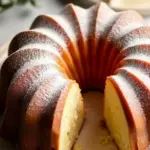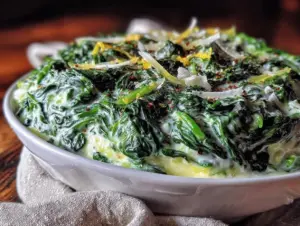There’s something so magical about a vanilla bundt cake. From the moment it emerges from the oven with its golden curves to the way it fills your kitchen with an irresistible aroma—this recipe is one you’ll want to bake again and again. Perfect for beginners, this vanilla bundt cake features a buttery crumb that melts in your mouth and a gentle sweetness that pairs beautifully with coffee, tea, or a simple frosting drizzle. Let me tell you, it’s a showstopper for any occasion, yet surprisingly simple to make!
Whether you’re looking for a dessert to impress at a dinner party or just want to treat yourself to something delicious, this vanilla bundt cake recipe is here to save the day. Plus, bundt cakes have such a rich history that makes them even more charming. Let’s dive into why this recipe is worth baking and how you can make it your own.
The Story Behind Vanilla Bundt Cake
Bundt cakes are as much a feast for the eyes as they are for the palate. The iconic shape comes from the Nordic Ware bundt pan, which was first introduced in America in the 1950s. Inspired by traditional European designs, the pan quickly became a favorite among home bakers. And you know what? It’s easy to see why—bundt cakes are stunning straight out of the oven, no elaborate decorating required!
Growing up, vanilla bundt cake was a staple in my family. My grandma would whip one up for special occasions, and her kitchen always smelled like heaven while it baked. She’d sprinkle powdered sugar over the top and serve it with fresh berries. Over the years, I’ve tinkered with her recipe to create this version—one that’s just as buttery and tender but even simpler to pull off.
If you’re making this during spring or summer, you can pair it with seasonal fruits like strawberries or peaches. Or, for a wintery twist, add a touch of cinnamon to the batter for a cozy flavor profile. No matter the season, this vanilla bundt cake is always a crowd-pleaser.
Let’s Talk Ingredients
Every ingredient in this vanilla bundt cake recipe plays an important role. Let’s break them down so you can choose the best options and make substitutions where needed:
- All-Purpose Flour: The backbone of the cake. Make sure to sift it for a lighter crumb. If you’re gluten-sensitive, you can try substituting with a 1:1 gluten-free baking flour.
- Butter: Use unsalted butter for a clean flavor. Room temperature butter is key for proper creaming with sugar. If you’re dairy-free, you can swap this for vegan butter or coconut oil, though the flavor will change slightly.
- Sugar: Granulated sugar gives the cake its sweetness and structure. For a deeper flavor, you could use half brown sugar—just note the crumb will be slightly denser.
- Eggs: Eggs bind everything together and add richness. Large eggs work best here. Room temperature eggs are a must for smooth mixing.
- Vanilla Extract: The star of the show! Use pure vanilla extract for the best flavor. You can even try vanilla bean paste for extra intensity.
- Sour Cream: This is the secret to a moist, tender cake. Greek yogurt works as a great substitute if you don’t have sour cream.
- Baking Powder and Baking Soda: These ensure your cake rises beautifully. Double-check they’re fresh for maximum effectiveness.
- Salt: Just a pinch enhances all the other flavors. Don’t skip it!
Each ingredient contributes to the cake’s buttery texture and delicate vanilla flavor. If you’re feeling adventurous, you can add a splash of almond extract or a teaspoon of lemon zest for a fun twist.
Equipment You’ll Need
Making a bundt cake doesn’t require fancy equipment, but a few key tools will make the process easier:
- Bundt Pan: The star of the show! Go for a heavy-duty, non-stick pan. I recommend greasing it generously to ensure your cake releases smoothly.
- Stand Mixer or Hand Mixer: For creaming the butter and sugar. A whisk can work in a pinch, but it’ll take more elbow grease.
- Spatula: Handy for folding in the flour and scraping every bit of batter.
- Measuring Cups and Spoons: Precision matters, especially when baking.
- Cooling Rack: Essential for cooling your cake evenly once it’s out of the oven.
If you don’t have a bundt pan, you can use a round or loaf pan—just keep an eye on the baking time, as it may vary. Pro tip: Before using your bundt pan, check for scratches or worn spots; these can cause sticking even with greasing.
Preparation Method
- Preheat and Prep: Preheat your oven to 350°F (175°C). Grease your bundt pan thoroughly with butter or non-stick spray, then dust with a light coating of flour.
- Cream Butter and Sugar: In a large bowl, beat 1 cup (226g) of unsalted butter and 2 cups (400g) of sugar until light and fluffy, about 3-4 minutes.
- Add Eggs and Vanilla: Beat in 4 large eggs, one at a time, letting each incorporate fully before adding the next. Mix in 2 teaspoons of vanilla extract.
- Mix Dry Ingredients: In a separate bowl, whisk together 3 cups (375g) of all-purpose flour, 1 teaspoon of baking powder, 1/2 teaspoon of baking soda, and 1/2 teaspoon of salt.
- Combine Wet and Dry: Gradually add the dry ingredients to the butter mixture, alternating with 1 cup (240g) of sour cream. Start and end with the dry ingredients, mixing just until combined.
- Transfer Batter: Pour the batter into your prepared bundt pan, smoothing the top with a spatula.
- Bake: Bake for 50-60 minutes or until a toothpick inserted into the center comes out clean. The cake should be golden and springy to the touch.
- Cool: Let the cake cool in the pan for 10 minutes, then carefully invert it onto a cooling rack. Cool completely before serving or decorating.
If your bundt cake sticks to the pan, don’t panic! Gently run a knife along the edges to loosen it. And remember, patience is key when cooling—it prevents breakage.
Cooking Tips & Techniques
Here are a few tips to make sure your vanilla bundt cake turns out perfect every time:
- Room Temperature Ingredients: Butter, eggs, and sour cream mix better when they’re at room temperature.
- Don’t Overmix: Overmixing can make your cake dense. Mix just until the ingredients are combined.
- Grease Thoroughly: Bundt pans are notorious for sticking, so don’t skimp on greasing and flouring.
- Check Early: Oven temperatures vary, so start checking your cake around the 50-minute mark.
- Cool Completely: Bundt cakes are fragile when warm, so let them cool before slicing or decorating.
Trust me, these small details make a huge difference. I’ve learned these lessons the hard way after a few stuck cakes and dense disasters!
Variations & Adaptations
This vanilla bundt cake is wonderfully versatile. Here are a few ways to switch it up:
- Chocolate Swirl: Add half a cup of melted chocolate to half the batter and swirl it together for a marble effect.
- Lemon Glaze: Mix powdered sugar with fresh lemon juice and drizzle over the cooled cake for a tart, sweet finish.
- Holiday Spices: Add a teaspoon of cinnamon and a pinch of nutmeg for a festive twist.
- Gluten-Free Option: Use a 1:1 gluten-free baking flour for a similar texture.
- Vegan Adaptation: Swap butter for vegan margarine and eggs for flaxseed or applesauce. Use non-dairy yogurt instead of sour cream.
I once made this cake with orange zest and a citrus glaze—it was a total hit at brunch!
Serving & Storage Suggestions
This vanilla bundt cake is best served at room temperature. Dust it lightly with powdered sugar or drizzle it with a simple vanilla glaze for added sweetness. Pair it with fresh berries and whipped cream for a more elegant presentation.
Store leftovers in an airtight container at room temperature for up to 3 days. If you’re freezing it, wrap slices tightly in plastic wrap and store in a freezer-safe bag for up to 2 months. To reheat, thaw overnight and pop a slice in the microwave for 10 seconds—it tastes just as good as fresh!
Nutritional Information & Benefits
This vanilla bundt cake serves about 12 slices. Here’s an approximate breakdown per slice:
- Calories: 320
- Fat: 16g
- Carbohydrates: 40g
- Protein: 4g
The sour cream contributes calcium and protein, while the eggs add essential nutrients like choline. However, it’s still a treat, so enjoy it in moderation if you’re watching your sugar or fat intake.
Conclusion
This amazing vanilla bundt cake with buttery crumb perfection is a recipe you’ll treasure forever. Whether you’re a beginner or a seasoned baker, it’s simple, delicious, and versatile enough to suit any occasion. I hope this recipe becomes one of your go-to desserts, just like it is for me!
If you try this recipe, I’d love to hear how it turned out. Leave a comment below or share a photo—seeing your creations makes my day! Happy baking, and remember, every bundt cake is beautiful, even if it’s not perfect.
FAQs
Can I use a loaf pan instead of a bundt pan?
Yes, but the baking time will vary. Check for doneness around the 45-minute mark.
What’s the best way to grease a bundt pan?
Use softened butter or non-stick spray, and dust with flour for extra insurance.
Can I make this cake ahead of time?
Absolutely! It stays fresh for up to 3 days at room temperature or 2 months in the freezer.
What’s the secret to a moist bundt cake?
Sour cream and avoiding overmixing are key to keeping the crumb tender.
Can I add mix-ins like nuts or chocolate chips?
Yes! Fold them into the batter before transferring to the pan for even distribution.
Print
Vanilla Bundt Cake Recipe Perfect for Beginners
- Total Time: 65-75 minutes
- Yield: 12 servings 1x
Description
This vanilla bundt cake features a buttery crumb that melts in your mouth and a gentle sweetness that pairs beautifully with coffee, tea, or a simple frosting drizzle. Perfect for beginners, it’s a showstopper for any occasion yet surprisingly simple to make.
Ingredients
- 3 cups (375g) all-purpose flour
- 1 cup (226g) unsalted butter, room temperature
- 2 cups (400g) granulated sugar
- 4 large eggs, room temperature
- 2 teaspoons vanilla extract
- 1 cup (240g) sour cream
- 1 teaspoon baking powder
- 1/2 teaspoon baking soda
- 1/2 teaspoon salt
Instructions
- Preheat your oven to 350°F (175°C). Grease your bundt pan thoroughly with butter or non-stick spray, then dust with a light coating of flour.
- In a large bowl, beat 1 cup (226g) of unsalted butter and 2 cups (400g) of sugar until light and fluffy, about 3-4 minutes.
- Beat in 4 large eggs, one at a time, letting each incorporate fully before adding the next. Mix in 2 teaspoons of vanilla extract.
- In a separate bowl, whisk together 3 cups (375g) of all-purpose flour, 1 teaspoon of baking powder, 1/2 teaspoon of baking soda, and 1/2 teaspoon of salt.
- Gradually add the dry ingredients to the butter mixture, alternating with 1 cup (240g) of sour cream. Start and end with the dry ingredients, mixing just until combined.
- Pour the batter into your prepared bundt pan, smoothing the top with a spatula.
- Bake for 50-60 minutes or until a toothpick inserted into the center comes out clean. The cake should be golden and springy to the touch.
- Let the cake cool in the pan for 10 minutes, then carefully invert it onto a cooling rack. Cool completely before serving or decorating.
Notes
Ensure all ingredients are at room temperature for better mixing. Grease the bundt pan thoroughly to prevent sticking. Avoid overmixing the batter to maintain a tender crumb.
- Prep Time: 15 minutes
- Cook Time: 50-60 minutes
- Category: Dessert
- Cuisine: American
Nutrition
- Serving Size: 1 slice
- Calories: 320
- Fat: 16
- Carbohydrates: 40
- Protein: 4
Keywords: Vanilla Bundt Cake, Easy Dessert, Beginner Baking, Moist Cake, Bundt Cake Recipe



